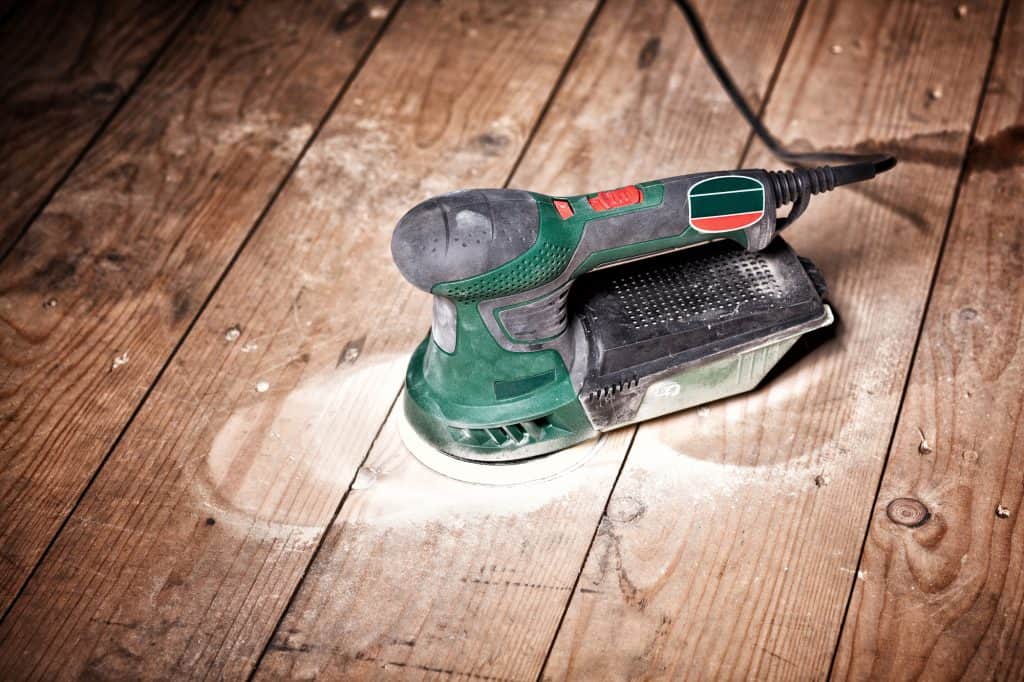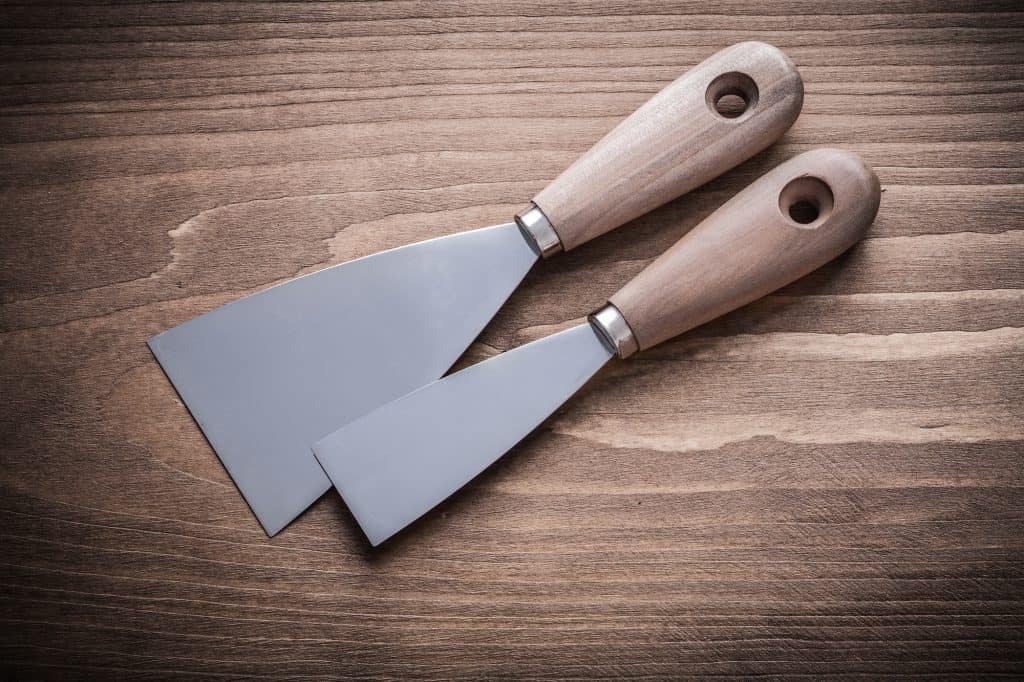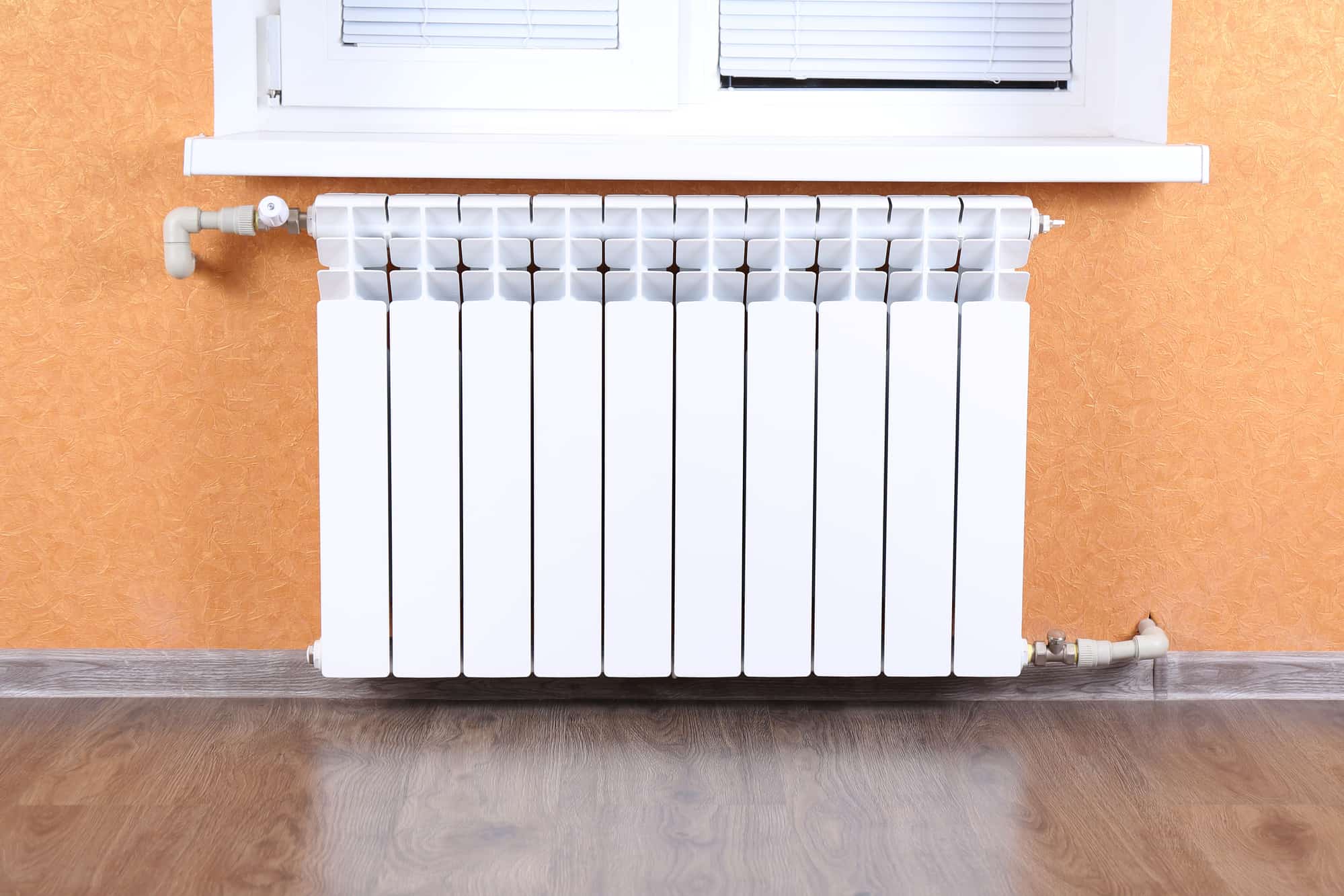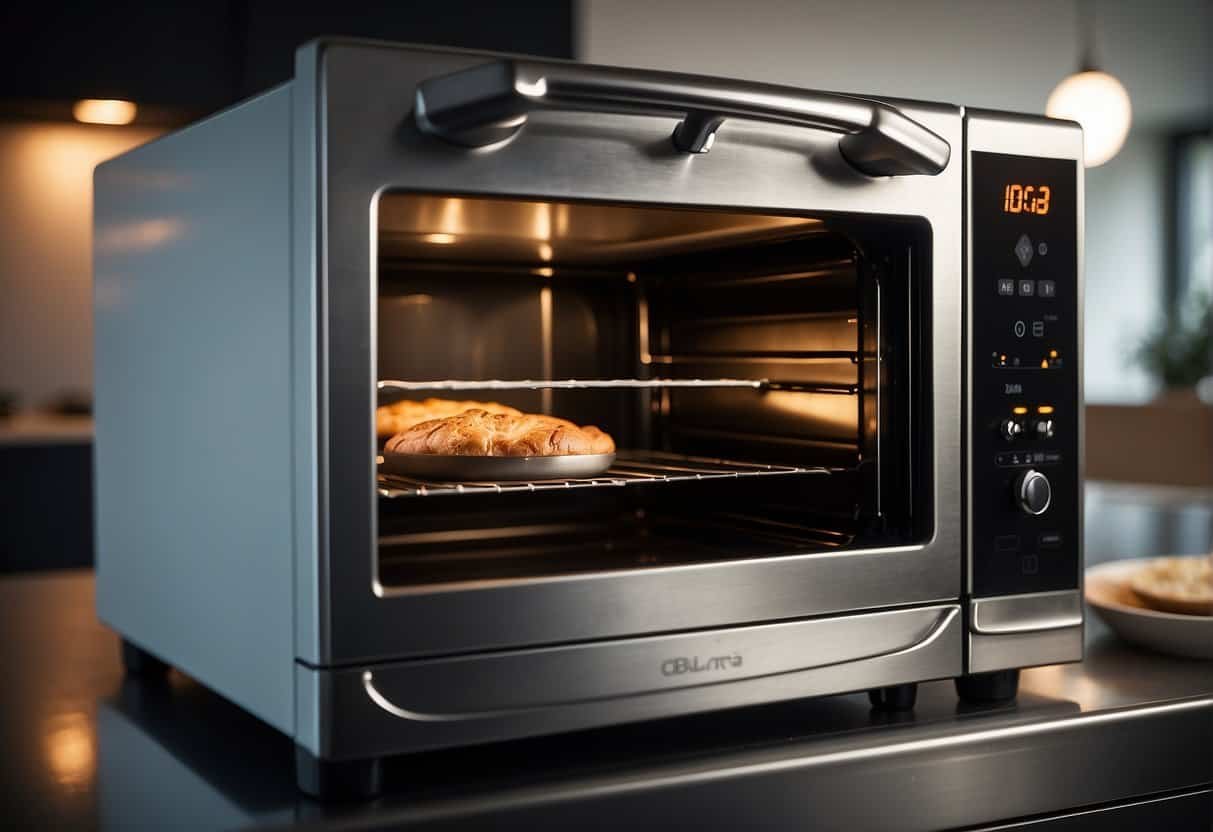Table of Contents
Refinishing or sanding wood floors isn’t very difficult because drum sanders do most of the work for you. However, after finishing the greater area of a room, you’re left with spaces like toe kicks under cabinets and awkward spaces behind radiators.
It’s easy to sand wood floors with radiators or cabinets using an angle sander and a bench scraper. Taking apart your furniture is only necessary if you cannot reach under them with the appropriate tools.
Keep reading to find the best ways to sand your wood floors, even under radiators, cabinets, and other tight or hard-to-reach spaces.

How to Sand Wooden Floors with Cabinets
If you’re already renovating the entire house, taking apart your cabinets may be an option worth considering. For most projects, however, it isn’t feasible to disassemble cabinets solely for the purpose of sanding toe kicks.
To sand wooden floors with cabinets, you have a few options to reach the parts of the floor that a standard drum sander won’t reach:
- Flooring edger
- Angle grinder
- Detail sander
I won’t get into the details of using a drum sander, but I suggest you rent (or buy) one because sanding wooden floors would take too long using small hand-held tools. Why? I wrote another article on sanding hardwood floors by hand.
A flooring edger is really your best tool to reach under toe kicks. In fact, it’s specifically designed to reach tough-to-reach areas. Only the front end of the sanding disc makes contact with the floor, which eliminates the risk of over sanding.
Using an edger is probably going to give you the best results because the tool is smaller than sanders, allowing you to reach every nook and cranny.
On the other hand, an angle grinder is a hand-held grinder that can be fitted with sandpaper or grinding discs. It’s convenient to own because it can be used as a sander and fitted with other heads for more versatility.
Because it is held at an angle, reaching underneath your cabinets should be simple enough. I recommend this 4½-inch BLACK+DECKER angle grinder on Amazon.
However, some problems can arise when using an angle grinder on wood. Check out the video below for tips on using an angle grinder which you can use when grinding underneath cabinets.
As you would do with any sanding project, always start with the lowest grit sandpaper you have and graduate to higher grit on second (and third) passes. (source: Sandpaper.com)
A detail sander is very simple to a normal random orbital sander (the one with a circular-shaped sanding disc), but the sandpaper is triangular. This type of sander is specifically designed to get into corners and the edges of furniture or other installments like cabinets.
You won’t be able to get under the toe kicks, but it makes it very easy to sand the edge where the cabinets meet the floor. Use light pressure when using a detail sander because it is a very powerful tool and too much pressure results in streaking.
For more on this, I wrote about sanding toe kicks under kitchen cabinets if that’s the project you’re working on.
How to Sand a Wooden Floor under a Radiator
Revamping the wooden floors can be a little more complicated if you have radiators installed in your home. After all, the option of removing the radiator isn’t as simple as taking apart cabinets.
Also, the spaces behind and underneath your radiator are significantly smaller. Hiring a professional to do it can also be costly. (source: Check A Trade)
An angle grinder or an edger won’t help with sanding under a radiator. So, if you’re unwilling to remove it, I highly suggest getting yourself a radiator edger.
Simply put, a radiator edger is a sander with a very thin extension that can be used to sand under the cast iron of your radiators or any other spaces under fixed furniture.
If you decide to purchase or rent a radiator edger (also called an extension edger), start using the regular edger first. By doing so, the edge between where you switched tools won’t be very visible because it will be under your radiator.
Also, the extension edge is more suitable for blurring out any marked lines between the two areas you’ve sanded.

Understandably, you may not want to use the radiator sander for the entire process. I prefer using a paint scraper to start the process. You may find it hard to reach behind the radiator, so I recommend getting the poles of a ZipWall dust barrier system and fitting the paint scraper on one end.
You can find ZipWall on Amazon, and you may need it to isolate some areas of your home while sanding.
A final tip I would suggest for anyone trying to sand wooden floors with radiators or cabinets is getting a set of knee pads. Sanding the edges takes a long time, most of which will likely require you to be down on your hands and knees.
You can sand wood floors with radiators and cabinets as long as you use the appropriate tools and sandpaper with good grit and some patience. After all, sanding is nothing but patience and a little bit of elbow grease.










